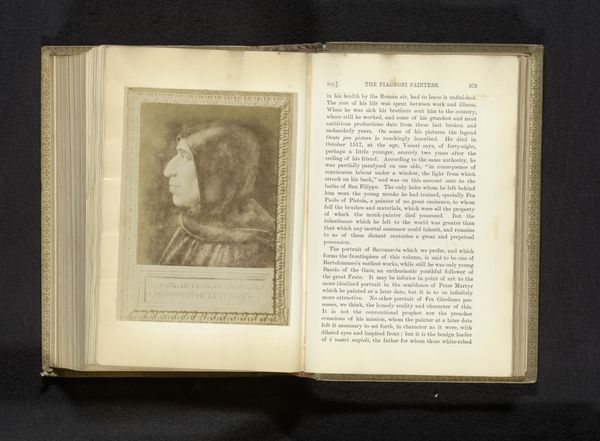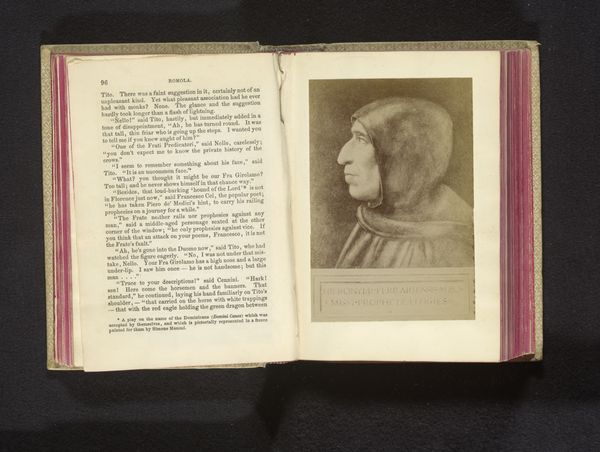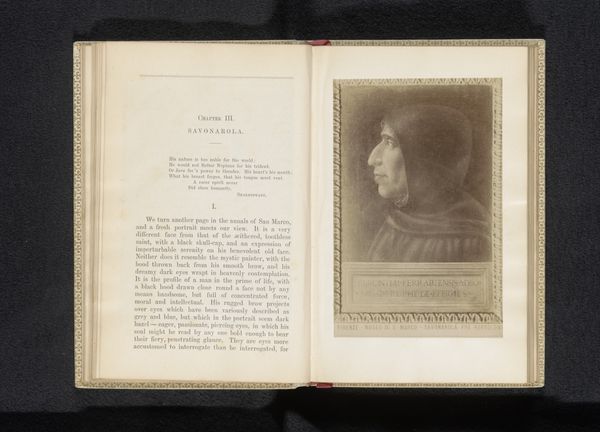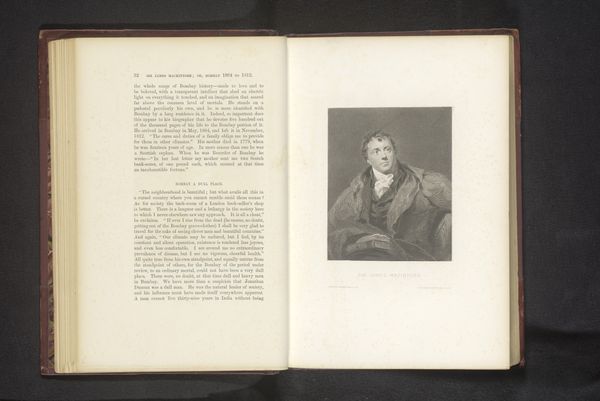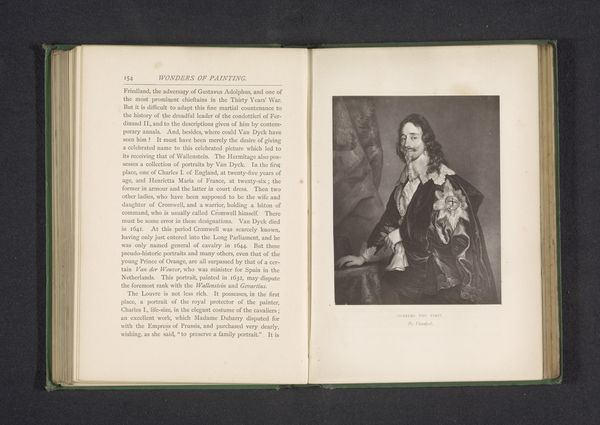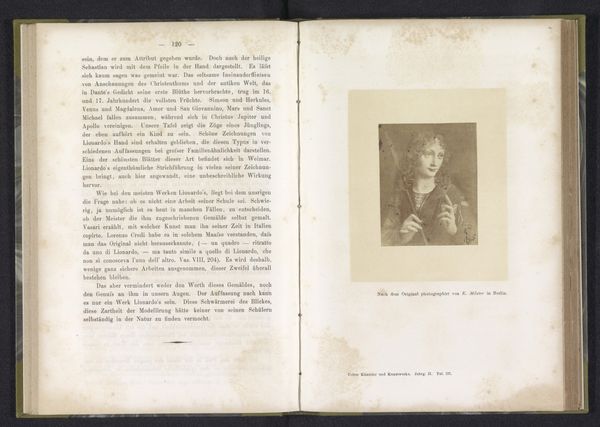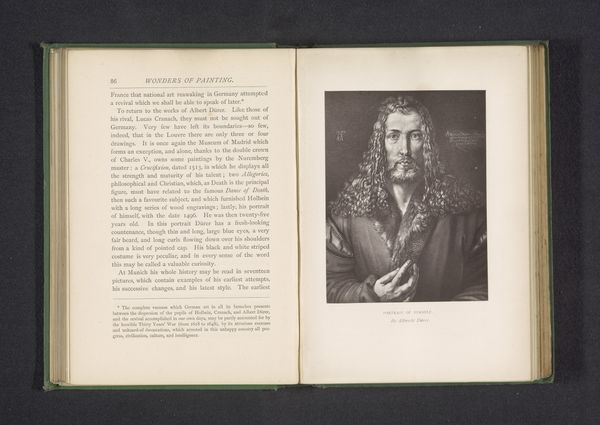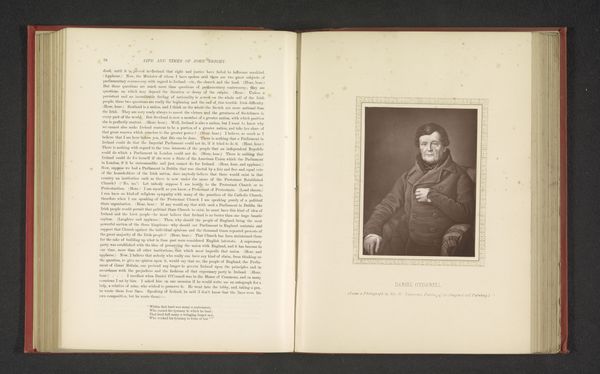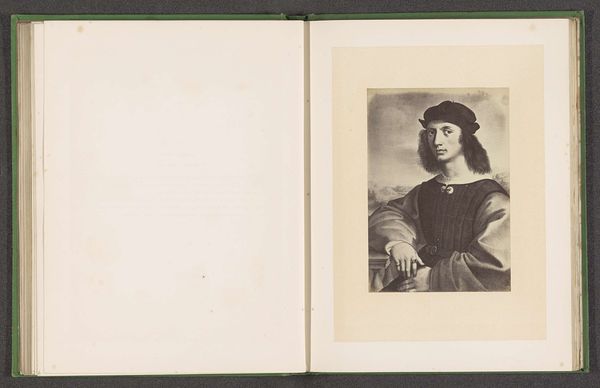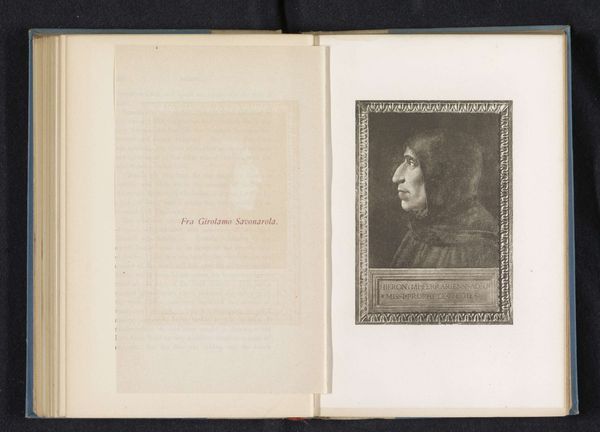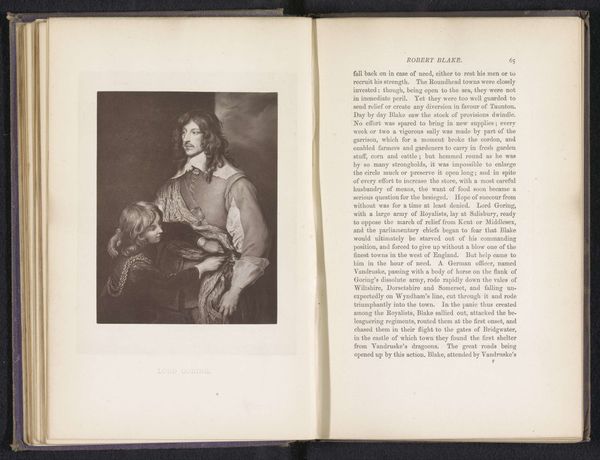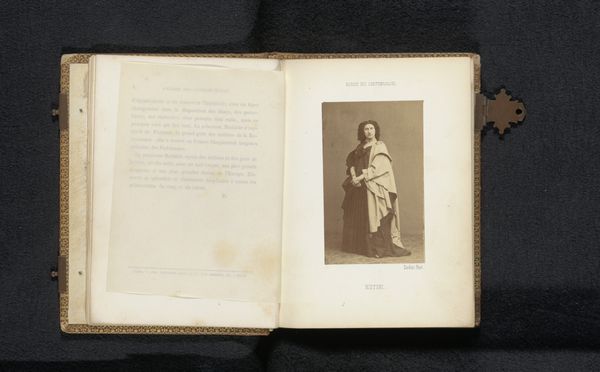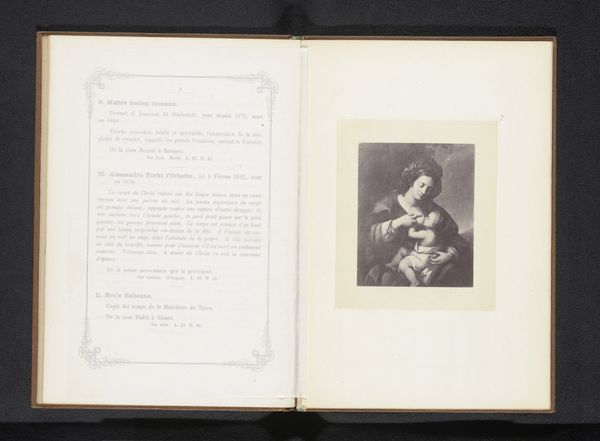
Fotoreproductie van een schilderij, voorstellende een portret van Giovanni Pico della Mirandola before 1890
0:00
0:00
print, photography, gelatin-silver-print
#
portrait
# print
#
11_renaissance
#
photography
#
gelatin-silver-print
Dimensions: height 134 mm, width 61 mm
Copyright: Rijks Museum: Open Domain
Curator: Here we have a photographic reproduction, specifically a gelatin silver print, of a portrait of Giovanni Pico della Mirandola. The original likely predates this print, situating it before 1890 and with ties to the Renaissance. Editor: My first impression is one of intense intellect tempered with melancholy. The figure’s direct gaze and the soft, almost dreamy, quality of the monochrome tones create an atmosphere of contemplative sadness. Curator: I am interested in the composition itself. The circular form, what seems to be a medallion in Pico's hands, draws the eye to the center. Notice also the velvety texture achieved through the photographic process, softening the Renaissance precision. The subdued palette further contributes to the photograph's overall aesthetic unity. Editor: Considering the period, and the reproduction as part of a book as seen here, the image speaks to the continued reverence for Renaissance figures and their philosophies, especially by the late 19th century. Pico, known for his syncretism of thought, represents an attractive image of a thinker grappling with tradition and modernity. His brief, accomplished life ended at age 31! Curator: Note the ambiguity in medium though – is the aim fidelity or reinterpretation? The lighting is such that Pico’s face and that medallion possess almost an unearthly glow. It's difficult to escape the sense that the photographer strove to ennoble the subject, visually and tonally. The softness in the print serves to romanticize and idealize, more than simply document. Editor: Absolutely. Gelatin silver prints allowed for a widespread distribution of imagery at a time when ideas of individual genius and intellectual legacy were paramount. Its dissemination facilitated, not necessarily its authenticity. Think how the portrait was viewed or engaged with by its original viewers – a prompt for reflection upon classical ideals amidst growing modernization. Curator: Ultimately, by distilling this Renaissance portrait through a lens of photographic reproduction, it both honors the subject and reimagines their relevance for a later age. The image’s interplay between clarity and ambiguity is key to appreciating it, and to interpreting our enduring fascination with this era of profound cultural transformation. Editor: Yes, in essence it encourages one to probe deeper, revealing historical layers of interpretation and highlighting art’s shifting role within public imagination over the ages.
Comments
No comments
Be the first to comment and join the conversation on the ultimate creative platform.
